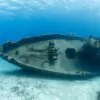Feedback
How water was sealed in a bottle – the history of bottled water
I remember one day I was suddenly and unexpectedly struck by a strange thought: why do we buy water in bottles? Isn’t it strange? Water is an element of nature. It falls from the sky, accumulates in rivers, lakes and oceans. Animals and plants find it themselves, and they drink it for free. Why do we, the people, have to buy this water in artificial packaging? It’s like buying pre-packaged air. After all, it doesn’t make sense!
History of bottled water – before the bottle
The history of bottled water begins in ancient times. Why? After all, there were no bottles back then! This is true, but clay and wooden vessels were already used in ancient Egypt, Greece and Rome to carry water from its intake to the house. When the Romans built aqueducts and a system of pipes to deliver water to the city, clay jugs were still used to store and carry it to where it was needed. On the other hand, wealthy patricians imported crystal clear water in barrels or amphorae from the distant Alps. It is the ability to carry smaller and larger quantities of water that connects ancient vessels to modern bottles. But when did it start being sold?
Mineral water from spa towns
Water has long been free and available to all. But it did not have the highest quality everywhere. People began to notice that in certain places there are springs whose waters can even cure diseases. Spas began to spring up around them. The desire to be able to take this healthy water home came naturally. This gives the history of bottled water another important point. The first mention of selling water in containers dates back to 1416. from Cheby, in the Czech Republic. But the heyday of spa towns didn’t come until the 17th and 18th centuries. And then it became fashionable to buy miracle waters to take away.
From clay jug to glass bottle
Bottles designed to sell water outside spas were available in France, Belgium and Germany as early as the 16th century. Made of hyalite glass, they were more pleasant to use and lighter to transport than traditional stoneware jugs. Unfortunately, due to the high price, only people of higher status could afford to buy them on a regular basis. Natural mineral water was gaining in popularity. In addition to its medicinal properties, it had a refreshing taste and a small amount of natural gas. In contrast, the water in wells or municipal water supplies was not biologically clean and posed a risk of disease. Water bottling was gaining momentum.
The history of bottled water states that the first bottling plant for spring water on an industrial scale was the Holy Well Bottling Plant, in the UK. It began its activities in 1622. Over time, other companies were formed to distribute water in Prague, Vienna and Nuremberg. Lower Silesian spas have also gained popularity. At the end of the 18th century. In Wroclaw, you could buy waters from Kudowa, Duszniki and Szczawno.
Transportation of mineral water
This new fashion also reached overseas quite quickly. In 1767, bottled water began to be sold by Boston-based Jackson’s Spa. Sparkling mineral water has become a symbol of health and a beverage fashionable at salons. Therefore, it is not surprising that attempts have been made to find a way to make ordinary water more like it. This was accomplished by a Swiss man named Johann Jacob Schweppe. In 1783, in Geneva, he discovered a method of adding gas to water.
America discovers bottled water
The Americans did not lag behind for long, as already in 1809. Joseph Hawkins obtained a patent for carbonated water. At the same time, bottling techniques and glass production also developed, making it cheaper. This initiated the growing popularity of carbonated water in the US market.
In 1856, more than 7 million bottles of water were sold in Saratoga Springs, New York. At the time, it was one of America’s most famous water sources. Pinta (473 ml) cost as much as $1.75. Due to the prevalence of typhoid and cholera epidemics, many Americans preferred to drink bottled water to that from the water supply. They believed it was not only cleaner, but also had medicinal properties. Over time, image arguments also came into play, as drinking water from a bottle was simply in style. Bottling in Europe has also seen rapid development. Appolinaris water from Göppingen had distribution rights here. In 1870, 800,000 were sold. Bottles, and in 1900 already 28 million!
Tap water and plastic bottles
The history of bottled water is not just about spectacular successes. In the early 20th century. A method for treating tap water with chlorine has been developed. It was not a perfect technique, but it allowed the safe use of tap water. As a result, the popularity of mineral in the 1920s. she fell. The lesser consumer interest lasted until the development of technology and advertising allowed the fashion to be resuscitated, and the history of bottled water continued.
New technology has contributed to the development of plastic bottles. The plastic from which they are produced is polyethylene terephthalate (PET). PET packaging, like glass before it, was expensive at first and not everyone could afford it. Over time, technology was improved and production costs were reduced. In the early 1950s. high-density polyethylene was introduced. PET bottles proved to be more durable and lighter than glass bottles, so they quickly gained popularity.
French Perrier water began to be sold in such packaging. Its manufacturer, in 1977, launched an advertising campaign in the US under the slogan Earth’s First Soft Drink. It cost $5 million and proved to be worth every cent spent. It brought sales up from 3 million bottles in 1975. to about 200 million four years later. Perrier was successful – it became the first and best bottled water in the US, gaining 85 percent. market share. And bottled water in all its glory has returned to the living rooms.
Drinking tap water vs plastic bottles
Today, the water condition in the city’s water supply is really good. Suffice it to say that it must meet the requirements of the State Sanitary Inspectorate. Otherwise, the alarm is raised and all residents in the area at risk of water contamination are warned against drinking water until the situation improves. In addition, we have a wide range of water purification and mineralization filters on the market. This means that we can safely drink straight from the tap!
Another issue is the plastic bottles themselves. Reuters shares creators, Drowning in Plastic, report that 55 million of them are consumed worldwide per hour. On a single day, we throw away 1.3 billion water bottles, and less than 500 billion in a year. It is estimated that more than 10 million tons of plastic enter the oceans each year. Manufacturers are trying to show us that these packages can be recycled. Unfortunately, most of them are completely unsuitable for this. Some will go to downcycling, which means that a lower quality product will be created from them, which can no longer be further processed. As a result, the bottles end up in a landfill or… in the ocean.
Bottled water production contributes to water waste. For example, to bottle one liter of waters Dasani The Coca Cola Company uses 1.6 liters of water from underground sources. Meanwhile, the state of California, where the bottling plant is located, has been plagued by droughts for years, and galloping climate change is contributing to increasing shortages of drinking water.
Why do we need bottled water?
The most important argument for producing and buying bottled water is its purity and health-promoting values. Despite great advances in science and technology, there are still many places in the world where people do not have access to potable water. Added to this are disasters such as floods, tsunamis, earthquakes and other situations that temporarily deprive people of access to clean water. That’s when transporting bottled water is at a premium.
But do I, living in Central Europe, in the 21st century, need to drink mineral water? I asked myself this question a nice few years ago, and eventually decided that the answer was no. The water from my well is not ideal, but it was enough to install a filter in the kitchen tap. Et voilà! I haven’t bought water for a long time, unless an extended outdoor trip requires it. The history of bottled water shows the glories and shadows of human inventions. It’s good that we’ve been able to come up with a practical way to store and transport clean water. Now we still have to learn to use this opportunity judiciously.

 Polski
Polski







